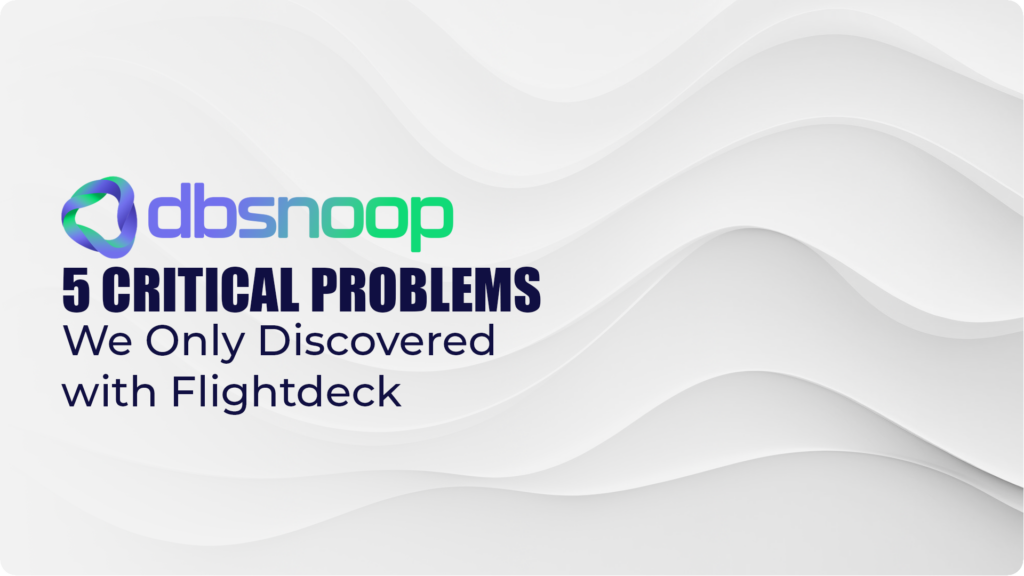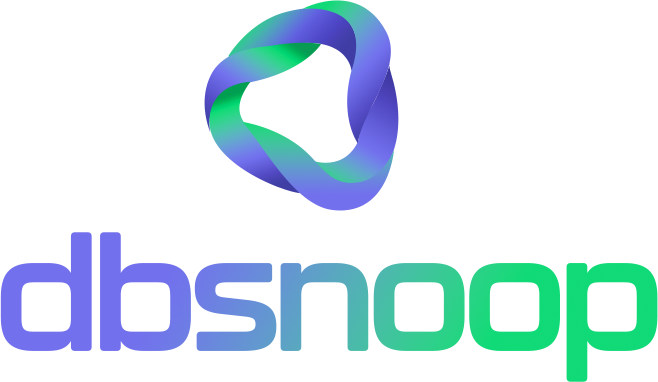

If you work with databases in complex environments—whether as a DBA, DevOps, SRE, DBE, or Tech Lead—you know that some problems only surface when they’ve already caused damage. Often, performance issues, security vulnerabilities, or instability go unnoticed by traditional monitoring tools, leading to unexpected risks and losses.
This is exactly where dbsnOOp Flightdeck stands out: an observability and troubleshooting solution designed to detect these critical failures before they become major headaches. In this article, we’ll reveal the 5 critical problems we only discovered with Flightdeck and show how you can avoid these risks in your own operations.
1. Latent slow queries and blocking issues affecting end users
Why Slow Queries Are Your Database’s Stealth Killer
Often, a slow query won’t trigger immediate alerts, but gradually degrades the end-user experience. This occurs primarily in systems with high concurrency and complex workloads.
The dbsnOOp Flightdeck Difference
With advanced query analysis, Flightdeck doesn’t just identify the slowest queries – it detects overlooked locks and deadlocks that conventional monitoring misses. Even better, it correlates these events with affected processes and services to accelerate troubleshooting.
Real-World Example
A fintech used Flightdeck to detect an intermittent lock causing latency in critical financial operations—an issue that went undetected by other tools. With rapid identification, their DBA team prevented revenue loss and maintained SLA compliance.

2. Data Leaks and Security Compliance Failures
Database Security: Why It’s Your Last Line of Defense
In today’s regulatory landscape (LGPD, GDPR, etc.), access control and change monitoring are mandatory. Yet most tools fail to detect suspicious modifications or unauthorized access in real time.
How Flightdeck Strengthens Your Security Posture
Flightdeck provides detailed monitoring of sensitive activities, automated alerts for suspicious patterns, and comprehensive audit reporting. This enables you to detect data leaks and compliance failures before they escalate into legal consequences or reputational damage.
Real-World Case Study
A healthcare company used Flightdeck to detect unauthorized access to patient records—preventing potential multi-million dollar fines while significantly strengthening their security posture.
3. Automation Gaps in Critical Routine Orchestration
Automation Without Observability Is a Ticking Time Bomb
While database operations are increasingly automated to achieve scale and reduce human error, inadequate observability allows routine failures to go undetected—until they trigger catastrophic impacts.
How dbsnOOp Flightdeck Helps
In addition to monitoring automated processes, Flightdeck integrates with DevOps tools to ensure that failures in jobs, scripts, and pipelines are identified immediately, providing insights for agile troubleshooting.
Market Example
A DevOps team discovered a silent failure in their backup routine that had stopped running without triggering alerts. With Flightdeck, they identified and fixed the issue before it escalated into a major disaster, ensuring continuous data availability.
4. Performance and Scalability Issues in Hybrid Cloud Environments
Hybrid Cloud Challenges
Managing databases across hybrid on-premises and cloud environments demands unified visibility and intelligent analytics to prevent performance bottlenecks and outages.
The Flightdeck Solution for Hybrid Environments
Flightdeck centralizes data from different environments, offers granular performance analysis, and helps optimize resources, enabling precise decisions for scalability and cost-effectiveness.
Real-World Case Study
A retail company optimized its hybrid database performance by using Flightdeck to identify resource-intensive cloud queries. Through strategic index tuning, they achieved a 40% reduction in latency while maintaining on-premises system stability.

5. Lack of visibility in air-gapped and isolated environments
The Challenge of Isolated Environments
Air-gapped environments—completely disconnected from the internet and external networks—create unique obstacles for implementing traditional monitoring and observability solutions.
How Flightdeck Overcomes These Limitations
Specifically engineered for restricted environments, Flightdeck enables local data collection and offline analysis—delivering detailed dashboards and actionable reports for teams managing isolated infrastructure.
Industry Example
A defense sector enterprise successfully deployed Flightdeck within their air-gapped environment to monitor mission-critical databases, achieving complete operational visibility while maintaining absolute security isolation—zero exposure risk.
Why choose dbsnOOp Flightdeck to solve these problems?
- Deep, correlated visibility across metrics, logs, and events
- Intelligent automation that speeds up troubleshooting and reduces MTTR (mean time to resolution)
- Built-in security with continuous monitoring and auditing
- Support for multiple environments — cloud, hybrid, and air-gapped
- Intuitive interface for technical teams and management
dbsnOOp has been establishing its authority in the market by offering a platform that combines cutting-edge technology with a focus on real challenges of modern databases. Flightdeck is a key tool for those who don’t want to be caught by surprise.
Conclusion
Ignoring critical database problems can be costly for your business—whether in performance, security, or compliance. dbsnOOp Flightdeck is the tool you need to identify, analyze, and resolve these challenges before they impact your environment.
Want to discover which problems you’re still overlooking?
Schedule a meeting with a dbsnOOp specialist or watch a free demo to see Flightdeck in action and transform your operation.
Visit our YouTube channel to learn about the platform and watch tutorials.
Schedule a demo here.
Learn more about Flightdeck!
Learn about database monitoring with advanced tools here.

Suggested articles:
Why Is Your Query Slow? Common Causes and How to Identify Them
I/O Bottlenecks in Databases: How to Detect and Fix Them
Reactive vs. Proactive Monitoring: What’s the Impact on Performance?

